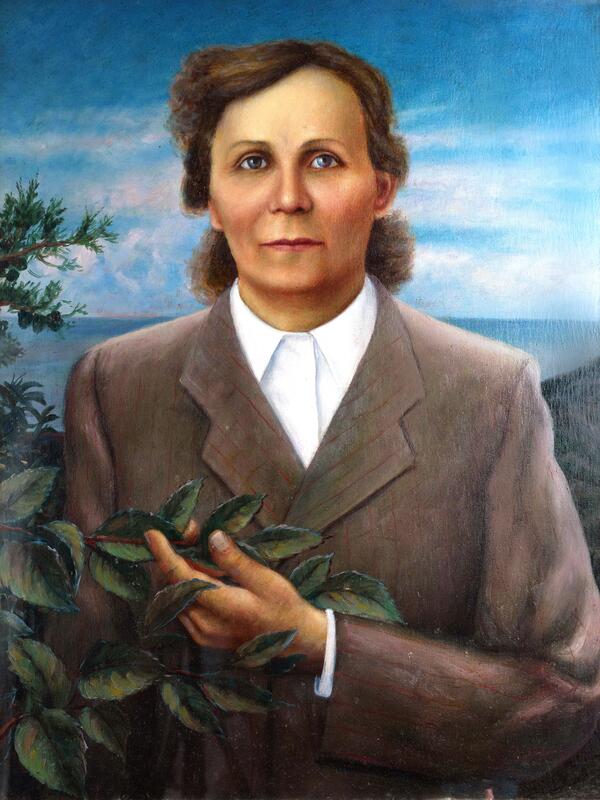There is a portrait of Sergey Sergeyev-Tsensky, painted by the artist Yury Bolshakov, on the central wall of the dining room above the sideboard. The waist-length portrait shows the writer without any headdress and wearing a light-colored suit against the background of the sea and a mountain slope. The oil portrait was commissioned by the relatives of Khristina Mikhailovna, the writer’s wife.
The portrait is in a wooden frame, which features a plaque with an engraved inscription “To dear Sergey Nikolayevich on his birthday from Yasha and Marusya Leonovs on September 30, 1957” at the bottom center.
The creative work of Sergey Sergeyev-Tsensky is closely connected with Crimea. In 1906, he settled permanently in Alushta, bought a small plot of land on a hillside near the city and transformed his house into his writing studio. Sergey Sergeyev-Tsensky lived there for 50 years. He worked hard to turn that barren place into a blooming garden.
Once the writer Alexey Novikov-Priboy said that Sergey Sergeyev-Tsensky had no reason to look for new impressions when he could stay on his mountain in Alushta, where he lived permanently. He added that Sergeyev-Tsensky could live in seclusion for years on end and yet experience no lack of themes or subjects to write about because his imagination was that vivid. To that, Sergeyev-Tsensky replied that the secret was not his imagination but the ability “to accumulate the necessary stock of life experience in a timely fashion and keep it in the writer’s storehouse, that is, in the memory, for the time being.” He also noted that Novikov-Priboy was himself quite proficient in that skill.
Sergey Sergeyev-Tsensky is a major representative of Soviet literature. Maxim Gorky called him “a master of word mysteries” and “a landscape painter and an insightful man who reads people like a book”, and Mikhail Sholokhov called him “a bogatyr hero of our Russian literature.”
Sergeyev-Tsensky wrote two epics — “Russia’s Transfiguration” and “Sevastopol Labors”, as well as many novels, short novels, short stories, plays, poems in prose, literary and opinion articles, dramas, comedies, poems, and fables. The unpublished “Diaries of a Poet” contain over 5,000 poems and fables.


